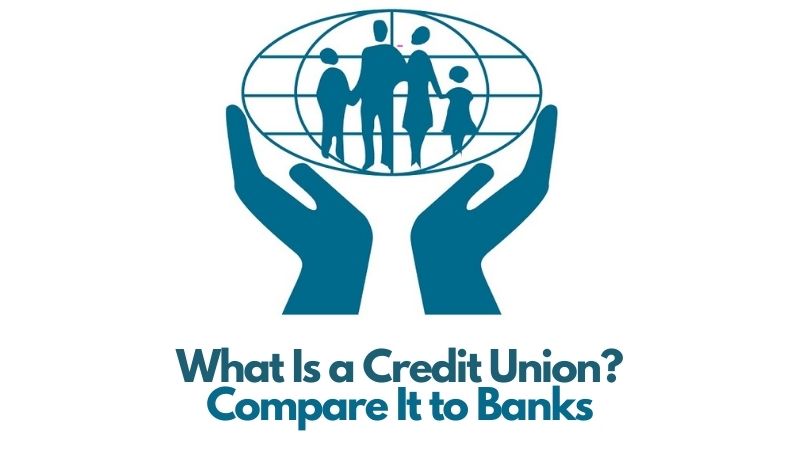What Is a Credit Union? Compare It to Banks

Banks and credit unions are financial institutions that provide similar services. Customers will be able to open savings and settlement accounts here, take loans for the purchase of cars and real estate. However, there are also differences between these financial organizations. The bank is a separate institution, its purpose is to generate profit for shareholders. Credit unions accept clients into the ranks of their members, who collectively own the organization. However, there are other differences.
What is a credit union?
A credit union is a non-profit financial organization founded by private individuals or trade unions who provide services to their members. For the provision of loans, money is taken from the fund, where members contribute membership fees. This is a kind of financial assistance to those members of the organization who need it.
Important! Participants will receive a reward – interest – for the opportunity to borrow funds to solve their problems (vacation, travel, treatment, education, purchase of real estate or a car, etc.).
Creation of a credit union
The main principle of creating a credit union is to unite people who know each other well and treat each other with trust. A credit union is created among people united by one community: a common place of work, one profession, a common place of residence.
The creation of a credit union begins with the emergence of a group of people who initiated the creation of a credit union. The initiative group develops the constituent documents of the credit union, holds the first constituent assembly, and registers the credit union.
There is a draft credit union charter. After the first meeting, the credit union begins its activities.
Features of a credit union
All members (or a certain part) place money on bank accounts. And if the participant needs funds, he or she can get them. Within the agreed period, the money must go to the bank account, but this time together with interest.
Attention! The work of the credit union is regulated by a charter. The document specifies the amount of monthly fees that all participants must pay.
At first glance, cooperatives resemble banks. They have a similar scheme of actions – issuing loans for profit. However, the credit unions do not set the goal of getting rich from interest.
The main differences
Banks are often compared to credit unions since the activities of organizations are directly related to lending. Parallels are drawn to identify similarities and differences in the activities of each organization. However, there is still a difference:
- Banks are very demanding of their customers. To get a loan, a financial institution checks the borrower. Attention is paid not only to his or her place of work, family composition and income, but also to his or her credit rating. Often, banks prefer to work only with those who are served by them (salary project, deposits, etc.). If a potential client has loans from other banks or does not have enough funds to pay the body and interest on the loan, he or she may be denied a loan. To get a loan to buy a home or a car, run a business, or purchase expensive equipment, banks may require collateral and a guarantor;
- Credit unions are often unable to disburse large amounts because they only have funds that members contribute. The terms for granting loans are also not always long – they are often insignificant;
- If a customer delays payment, banks accrue fines, penalties, and may seize property. All this is done in order to protect the interests of shareholders. In credit institutions, all shareholders decide on the need to collect fines. If the reason is valid, and the delay is insignificant, then the borrower can be forgiven the debt or provide an extension;
- Credit institutions distribute the received interest among all participants. Often the profits obtained are used to expand the scope of activities, improve the quality of services provided. It is common for banks to view all interest, singing, and fines as additional profits that are sent to shareholders.
Many activities of cooperatives depend on the charter. The more members such an organization has, the wider the opportunities. Large organizations offer to deposit funds through terminals that are installed in crowded places.
Important! Lending organizations often provide online loans. They work through the network, provide an opportunity to pay for obligations and deposit funds online.
Unique features of credit unions
Such organizations simplify their work as much as possible. Benefits include:
- Ability to receive funds without wasting time. The loan is provided as quickly as possible. The application can often be submitted virtually;
- Lack of guarantors. To obtain borrowed funds, you will not need guarantors, collateral or a package of certificates;
- Features of management. Each member of the organization has the right to take part in the work of the company. This does not depend on the length of time in the ranks of the members of the company, as well as on the amount of contributions already made;
- Possibility of writing off penalties, if such is agreed with the founders.
There are also minor drawbacks. Only a member of the union can receive credit funds. There is no way to borrow a large amount for a long time. That is why they contact credit institutions when there is no way to get loans for buying a car or real estate in a bank that is ready to wait a long time and provide a large loan.
Important! Another feature of credit institutions is interest on loans. They are often higher than in banks.
You can read all the latest news about credit unions on the pages of Daily CU Scan
